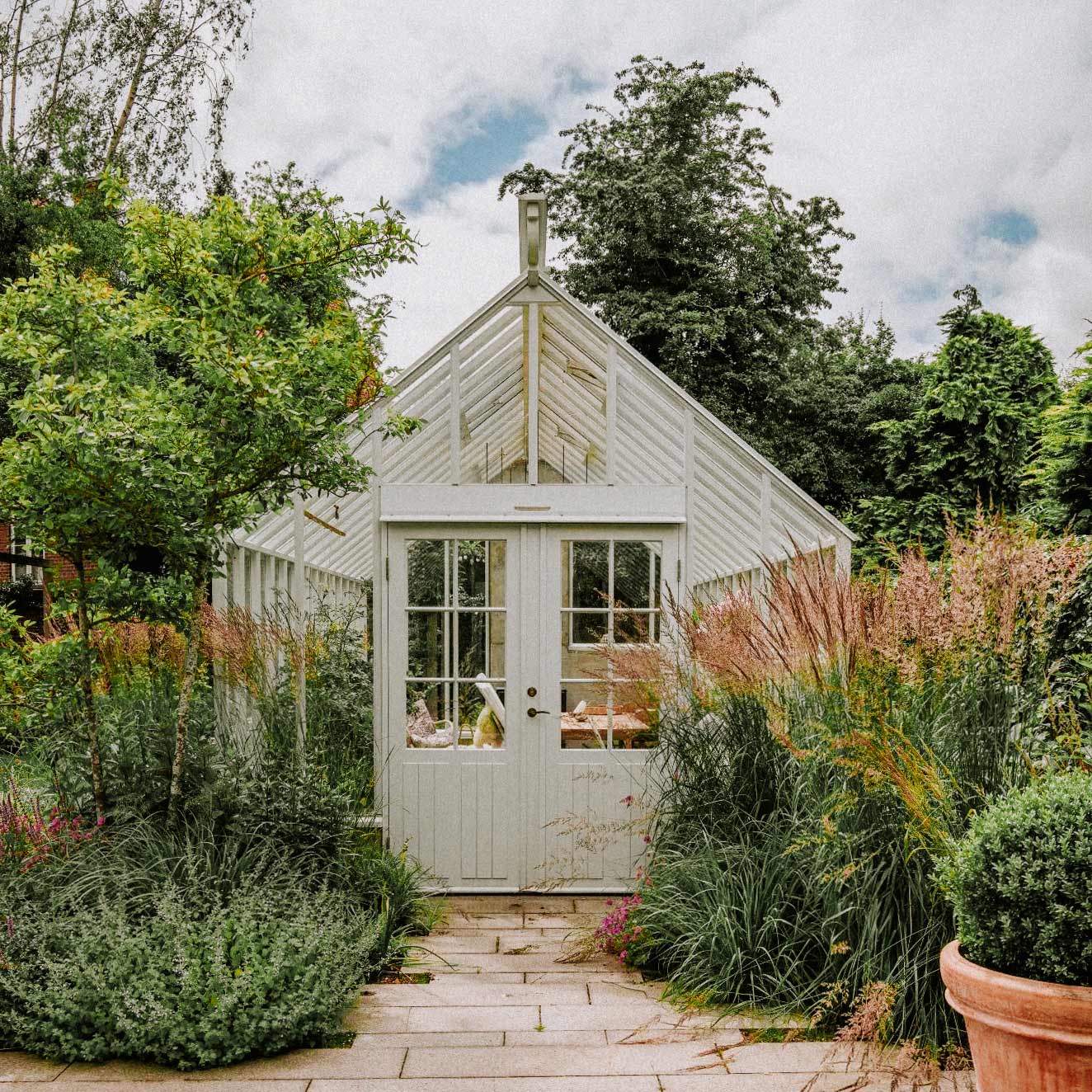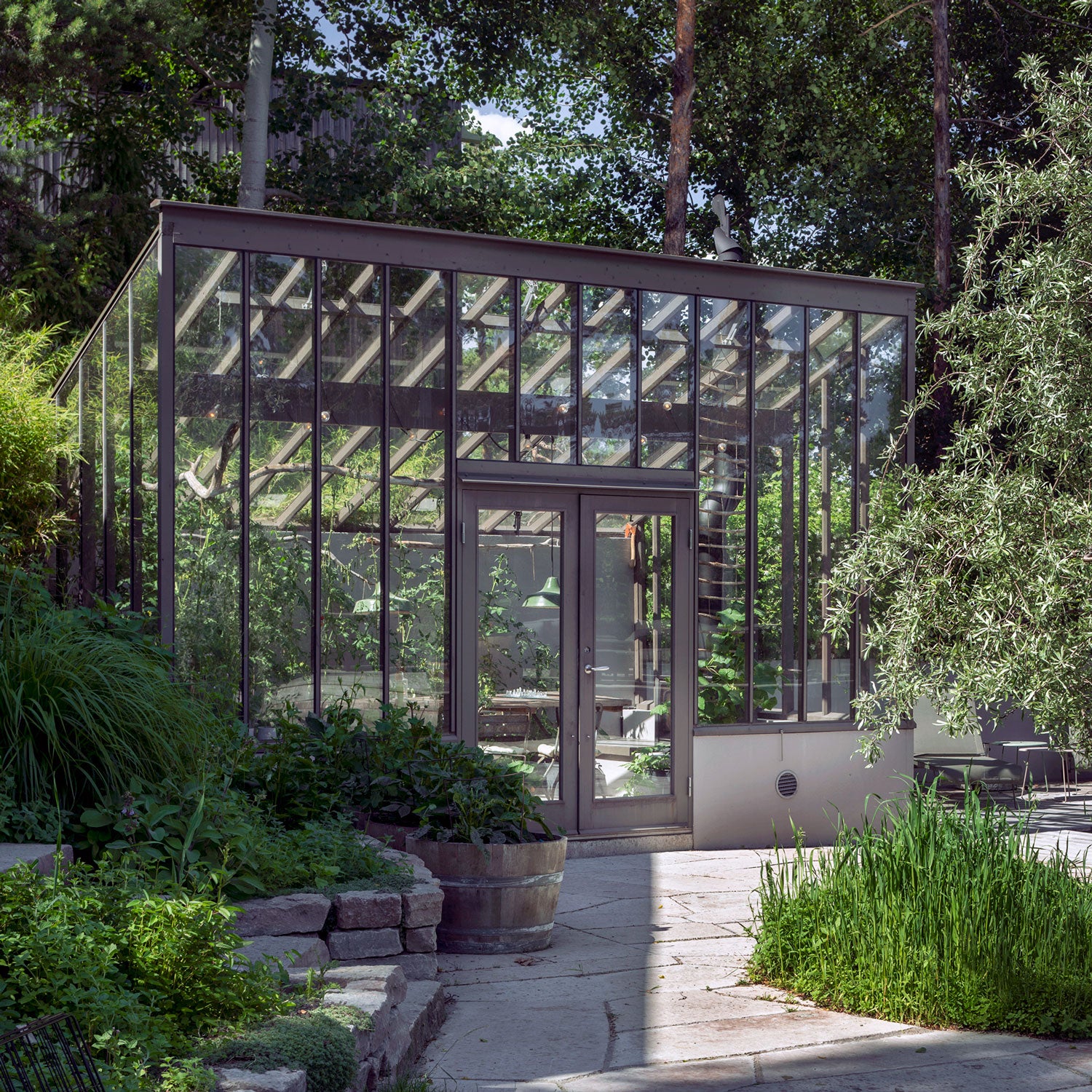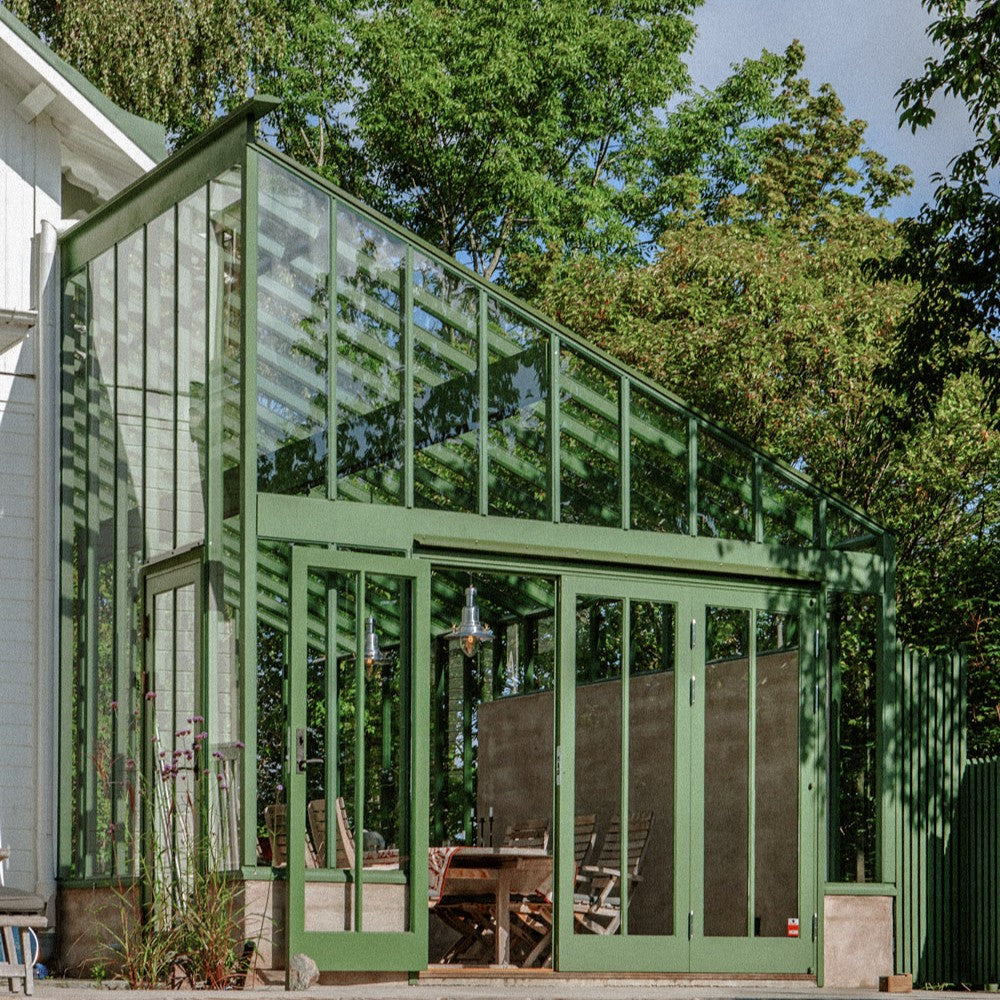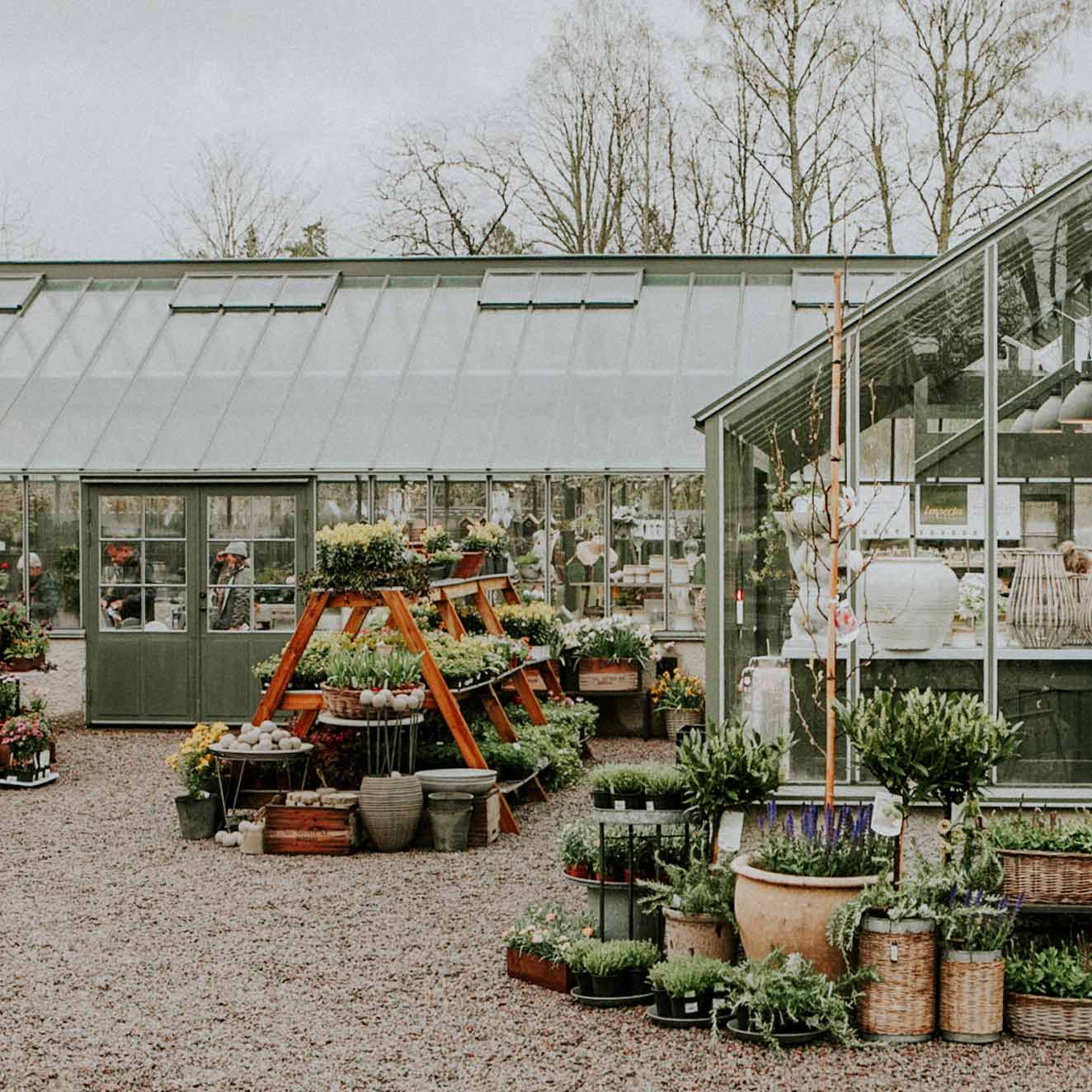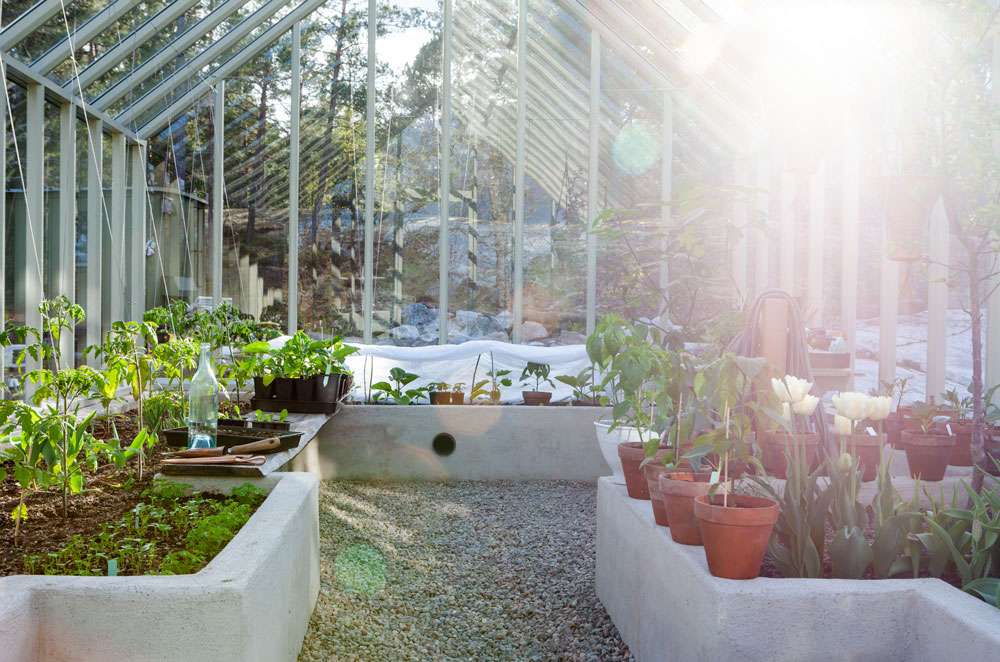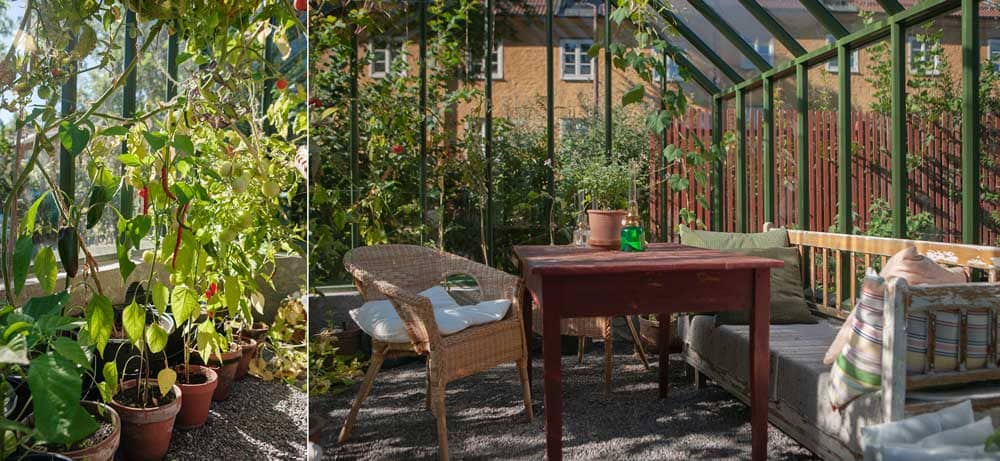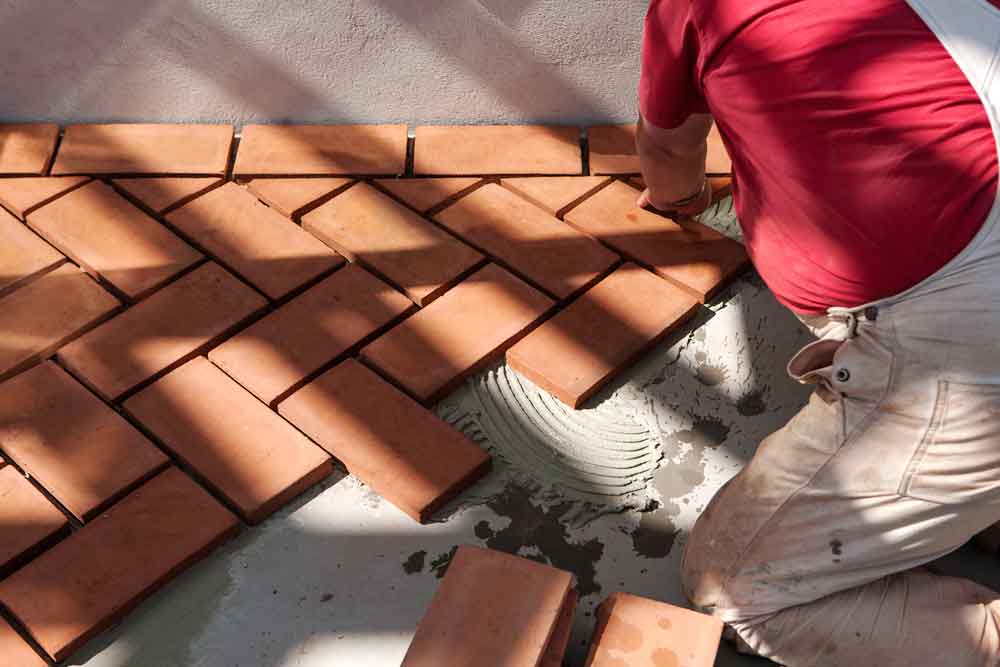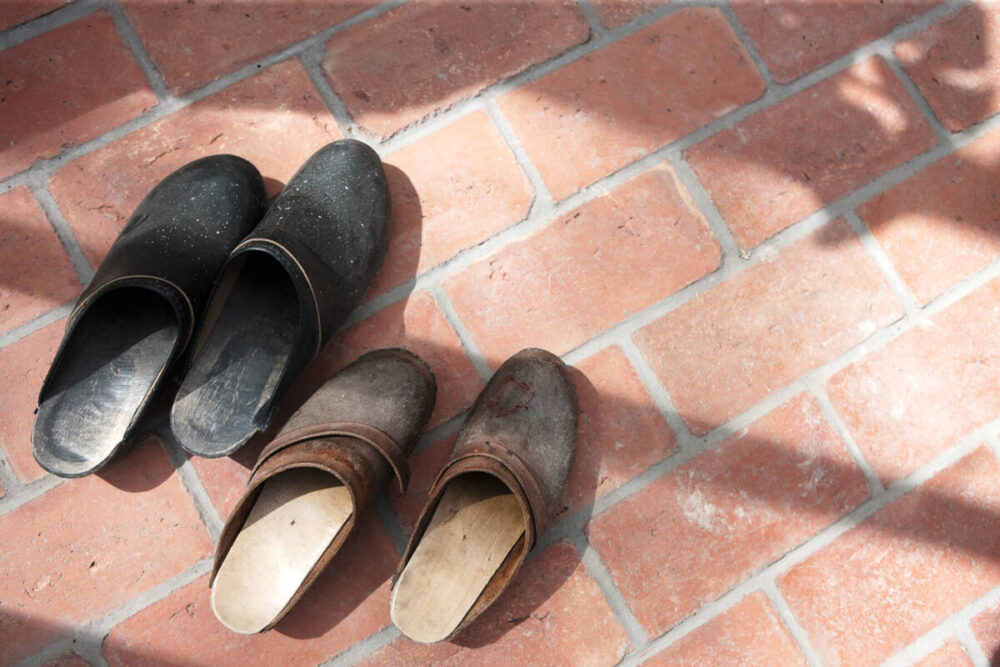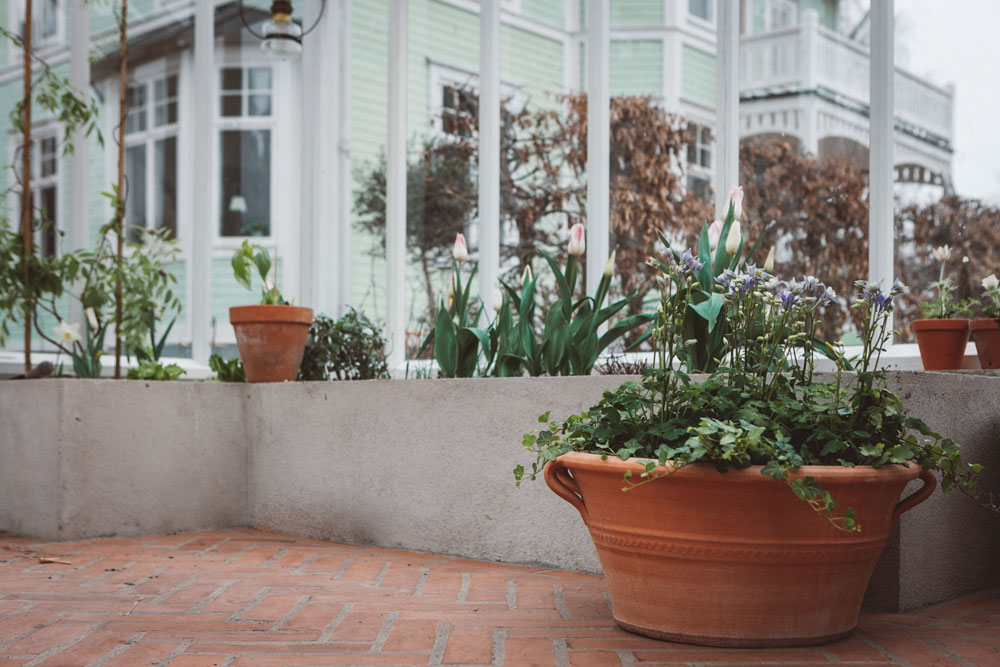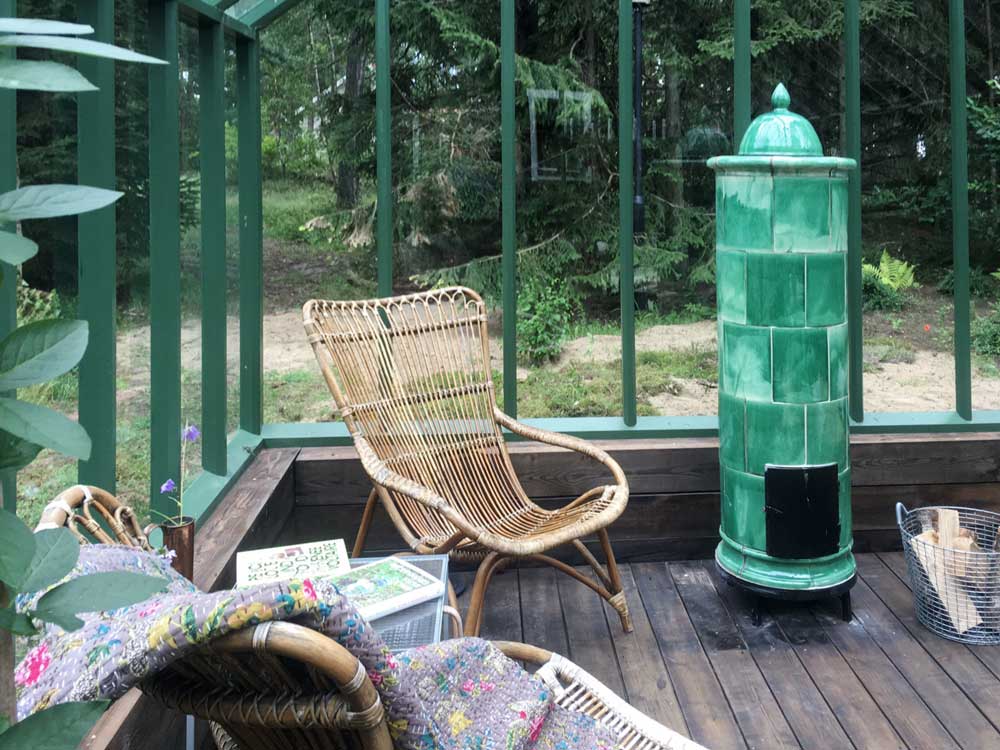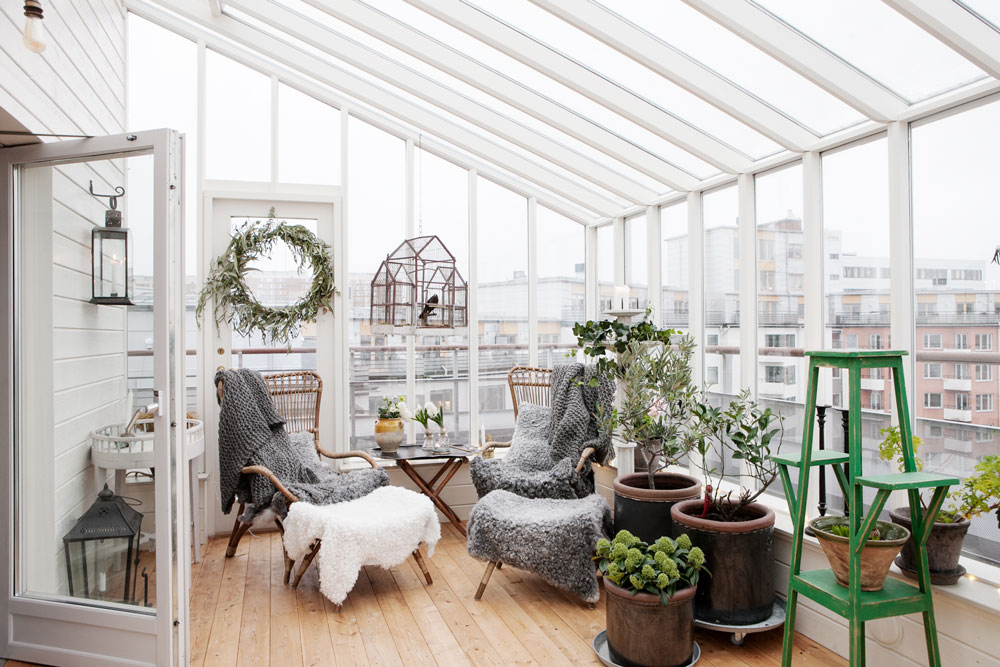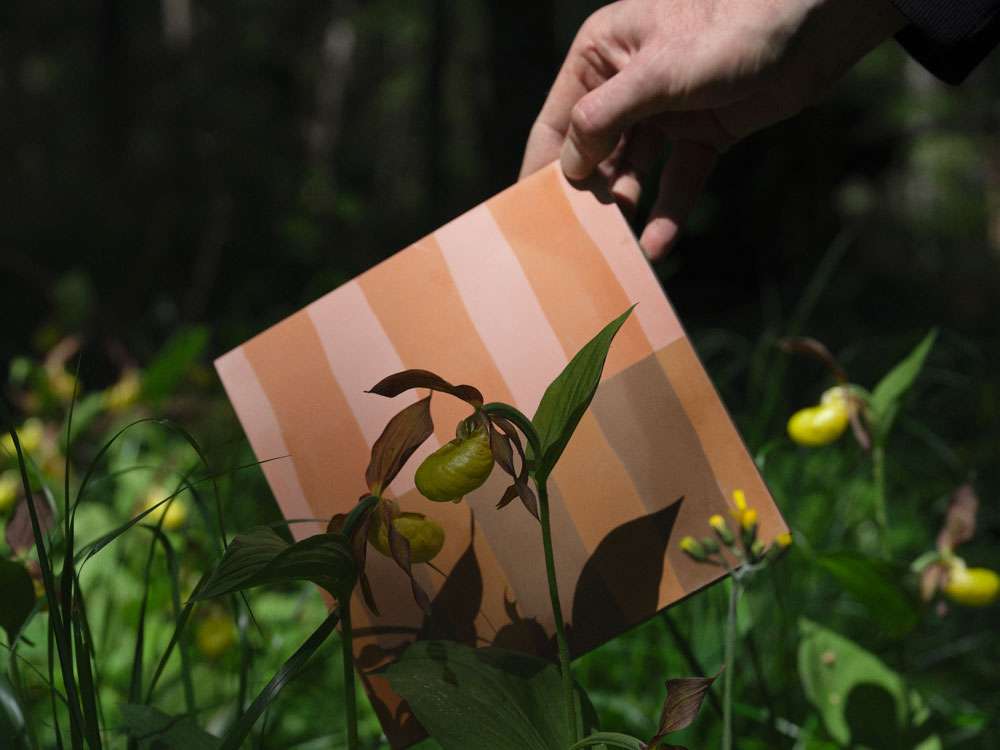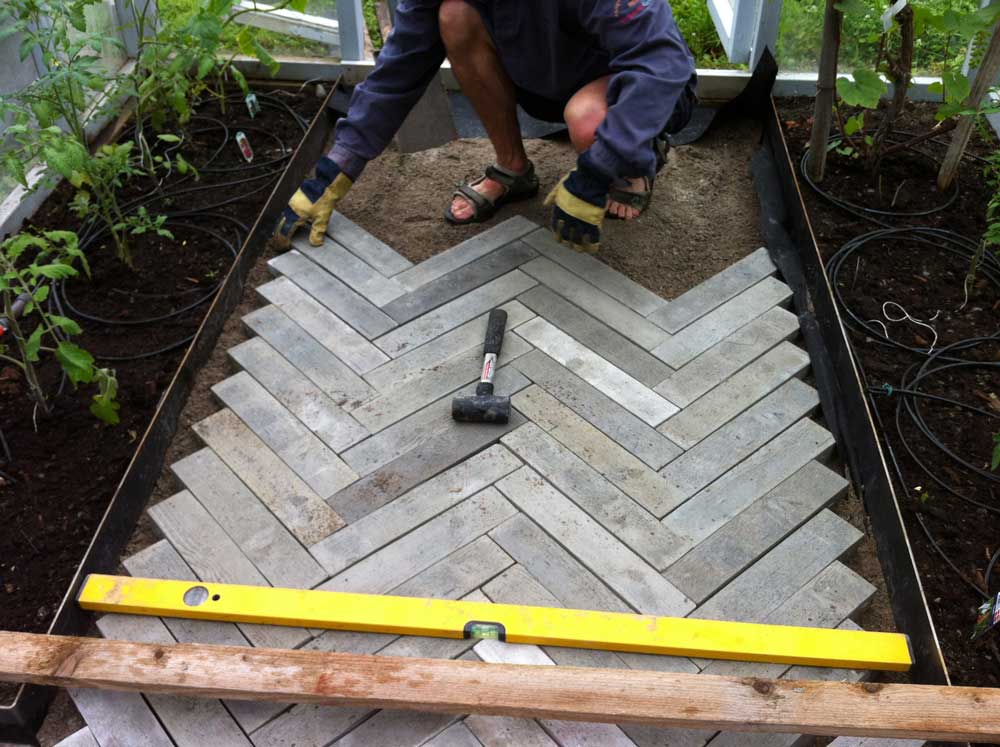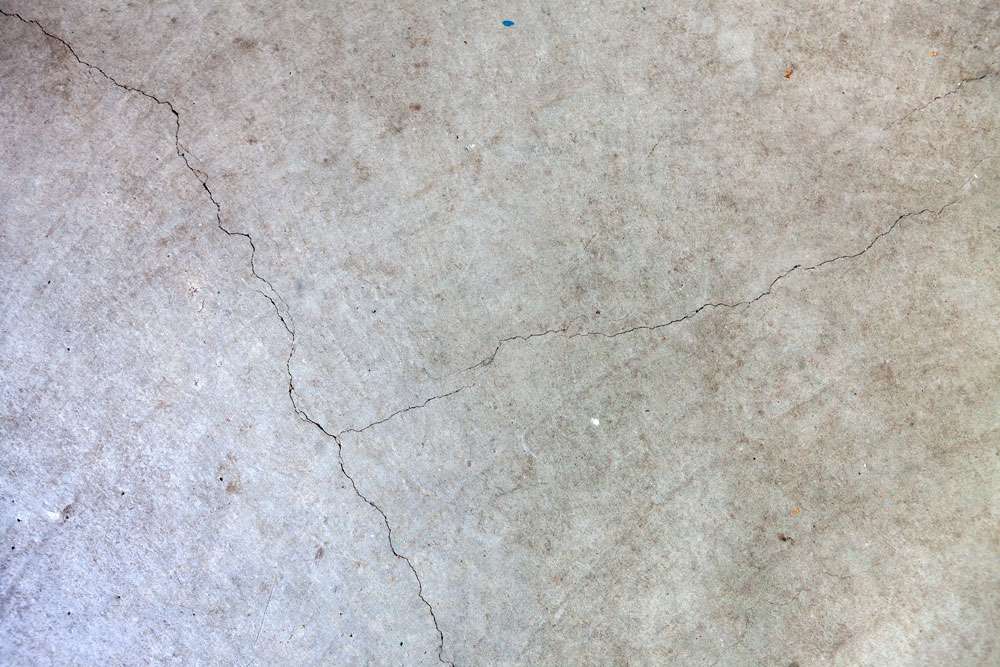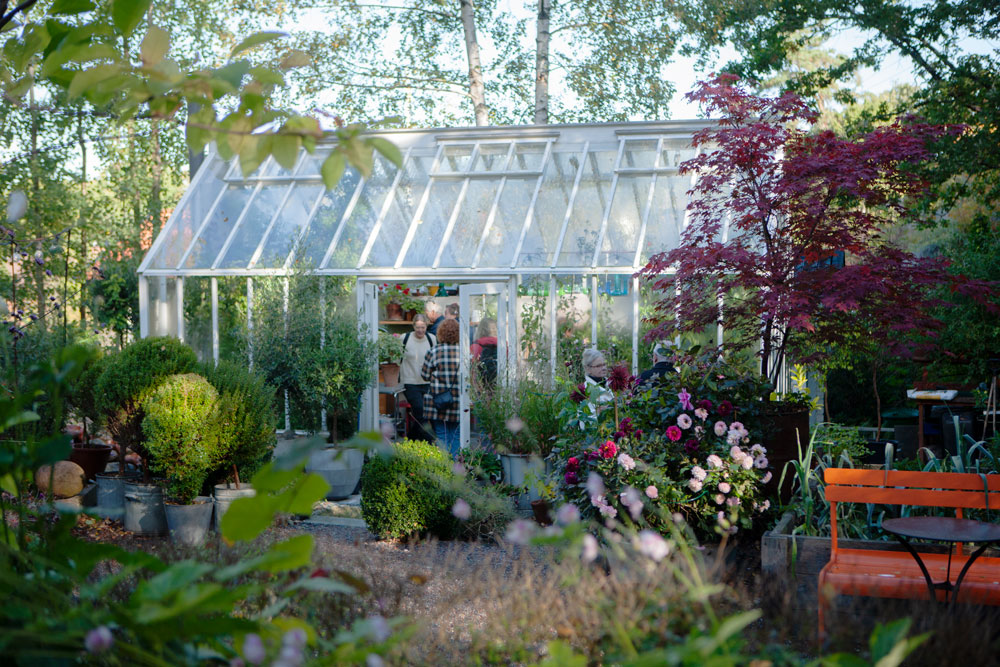1. Gravel floor – a timeless and natural solution for the greenhouse.
For those looking for a practical and stylish alternative, gravel flooring is an excellent choice for the greenhouse. Its natural appearance creates a harmonious environment where it feels easy to relax and enjoy growing and socializing. The texture of the gravel also gives it a charming character with its crunching sound underfoot – a detail that enhances the feeling of a genuine and down-to-earth experience. In addition to its aesthetic charm, the gravel flooring offers great flexibility. Since you don't have to pour a concrete slab, you can let the greenhouse develop over time. Perhaps you want to plant an apricot tree or create a lush oasis with direct contact with the earth – the gravel flooring makes it possible.
For those of you who appreciate shaping a greenhouse that is both functional and elegant, gravel is a timeless and sophisticated choice.
2. Brick – a classic and durable floor
Tile flooring is laid on a poured concrete slab, and many choose to insulate the floor at the same time to maximize functionality. The result is a durable and neat floor that gives a classic impression, and it is a material used in both newly built greenhouses and historic orangeries.
Brick is a practical flooring material that also adds timeless beauty. It comes in many color schemes and gives a natural feel that goes well with both wood and glass in orangery and greenhouse environments. The pattern you choose to lay the brick in affects the expression of the style: A herringbone pattern gives a more exclusive and worked impression, while a straighter pattern with bricks in a row gives a calmer and more stripped-down expression.
3. Wooden floors – timeless and warm for orangeries and greenhouses
A wooden floor adds both warmth and elegance to your orangery or greenhouse, and the choice of wood can take the feel to whole new levels. For a more exclusive touch, you can go for woods like teak or oak, while more rustic options like spruce or pine give a natural and earthy feel.
Regardless of the type of wood, it is important to choose a floor that is adapted to the unique climate of a greenhouse or orangery. High humidity, temperature fluctuations and wear and tear from cultivation place special demands on both the material and the surface treatment. With the right type of wood and maintenance, you will get a floor that will not only last a long time but also become a beautiful part of the whole.
For those seeking a combination of aesthetics and function, wooden flooring is a timeless choice that will transform your greenhouse into an oasis of style and comfort.
In the winter gardenthat we built on a terrace in Nacka, a wooden floor was chosen to create a warm and soft atmosphere. The goal was to give the insulated winter garden an inviting orangery feel. To protect the environment at the same time, wood from sustainable and certified sources was used – a conscious choice that combines aesthetics with responsibility. A well-maintained wooden floor can last for many years and is a natural and environmentally friendly material that ages with charm and character.
4. Concrete and cement
In this beautiful green greenhouse, our client chose to lay patterned concrete slabs in red and white. The unique pattern gives a nostalgic feel and is reminiscent of an old-fashioned mattress. The floor becomes not only a practical surface but also a stylistic statement, contributing to the cozy atmosphere of the greenhouse – almost as if an elegant rug adorns the floor.
Concrete is a hard-wearing and durable material that is perfect for the humid environment of greenhouses and orangeries. It also offers endless possibilities for creating unique expressions, from patterned tiles to polished surfaces. With concrete, you get a floor that is both functional and cutting-edge in terms of design – a choice that harmonizes with both classic and modern interior styles.
Design your greenhouse floor with patterned cement tiles.
For those of you who are inspired by the patterned floor in the green greenhouse, we can highly recommend Marrakech Design. They offer a wide range of cement tiles with both classic and modern patterns, developed in collaboration with prominent Swedish designers such as Martin Bergström, White Arkitektbyrå and Mats Theselius. Each tile is a small design creation that can give your greenhouse a unique character.
When choosing cement tiles for your greenhouse, however, it is important to keep in mind that some colors can fade over time, especially in direct sunlight. A good tip is to choose shades and finishes that can withstand the light and humidity conditions found in a greenhouse. This way, you can enjoy a floor that is both durable and aesthetically pleasing for many years to come.
Concrete is a material that can be adapted to suit your personal style and the overall design of your greenhouse. For those who prefer a minimalist aesthetic, unpainted concrete slabs can be a perfect choice. They create a clean and timeless look that lets the plants and decor take center stage.
Another option is to leave the cast base plate visible, without additional coating. This choice reinforces a raw, industrial feel that appeals to many who want a modern and minimalist interior in their greenhouse. The untreated surface highlights the natural beauty of the concrete and gives a robust, functional impression that also harmonizes well with the humid environment.
Polished concrete floor – style, function and design flair.
In the greenhouse we built forSvante and Niclas at Villa Sundahl GardenThey chose a polished concrete floor.Svante, former editor-in-chief of Elle Decoration, and Niclas, garden designer at their company "Villa Sundahl", with their keen eyes for design and style, have truly created a place that reflects their aesthetic sense. The polished concrete floor gives a timeless and exclusive impression that enhances the elegance of the greenhouse and creates a natural balance between the raw material and the green plants.
The unique thing about polished concrete flooring is not only its durability but also its ability to give the greenhouse a sophisticated atmosphere. The floor’s smooth, matte surface and natural color scheme mean that it harmonizes with both modern and classic interior styles. For Svante and Niclas, it was also important that the floor could be changed in the future. If they ever want to lay stone or brick, it is easy to do so on top of the concrete without losing the elegant feel. A polished concrete floor thus offers both long-term durability and stylish flexibility.
Care of the various flooring materials, adapted for use in greenhouses and orangeries.
1.Gravel floor
- Gravel requires minimal maintenance, but it may need to be replenished if it wears away over time or under greater stress.
- To keep the floor clean and prevent weeds from growing, it may be a good idea to use a ground cloth under the gravel and occasionally clear away any weeds.
- It is also a good idea to level the gravel if necessary to maintain an even surface.
- If the floor receives a lot of rain or is in a particularly humid area, it may be a good idea to review drainage and possibly raise the floor to prevent it from becoming too wet and muddy.
Advantages:
- Requires low maintenance and gives a natural look.
- Provides good drainage and reduces the risk of water accumulation.
2.Wooden floor
Care:
- Wooden floors need to be protected from moisture, so it is important to choose a type of wood that can withstand the greenhouse climate, such as ash, oak or teak.
- To preserve the appearance of the wood and protect it from the elements, the floor can be treated with linseed oil or a wood oil that provides protection against both moisture and wear.
- Regular maintenance may include re-oiling the floor once a year, depending on climate and usage.
- To prevent the wood from discoloring or losing its finish, it is important to keep the floor dry and to wipe up spills immediately.
Advantages:
- Gives a warm and natural feeling.
- Can be sanded and treated to extend the lifespan.
3. Brick floor
- Brick is a relatively durable material, but to preserve its appearance and function, it is important to keep the floor clean.
- To prevent dirt and debris from penetrating the joints, you can regularly sweep and wash the floor with a mild soap or a brick cleaner.
- If the floor is not sealed, you may want to consider adding a protective layer to prevent dirt from penetrating.
- If you notice that the tiles are worn or cracked, you may need to replace them or repair the joints.
Advantages:
- Long lifespan and durable.
- Naturally beautiful and easy to maintain with proper care.
4. Cement tiles
- Cement tiles, such as the patterned ones from Marrakech Design, often require a protective layer to preserve both appearance and durability.
- To prevent dirt and stains, it is recommended to treat the cement tiles with a sealing joint and a sealer.
- Cleaning is best done with a damp cloth or mop. Avoid using strong chemicals that can damage the surface.
- To preserve colors and patterns, it may be a good idea to protect the tiles from direct sunlight to prevent fading.
Advantages:
- Versatile and can give the greenhouse a stylish and unique feel.
- Durable and can withstand the humid environment of the greenhouse.
Polished concrete
- Polished concrete is a durable material that requires minimal maintenance.
- To prevent dirt and to maintain a smooth surface, you can wipe the floor with a damp cloth or mop.
- If it is exposed to a lot of moisture, you may want to consider applying a concrete sealer to protect the surface and prevent dirt from penetrating.
- Concrete can sometimes get stains from plants or soil, so it can be a good idea to quickly wipe up spills. Once a year, it can be a good idea to reapply the concrete oil or sealer to maintain its appearance.
Advantages:
- Modern and industrial feel that fits well in many greenhouses.
- Long lifespan and durable in humid environments.
